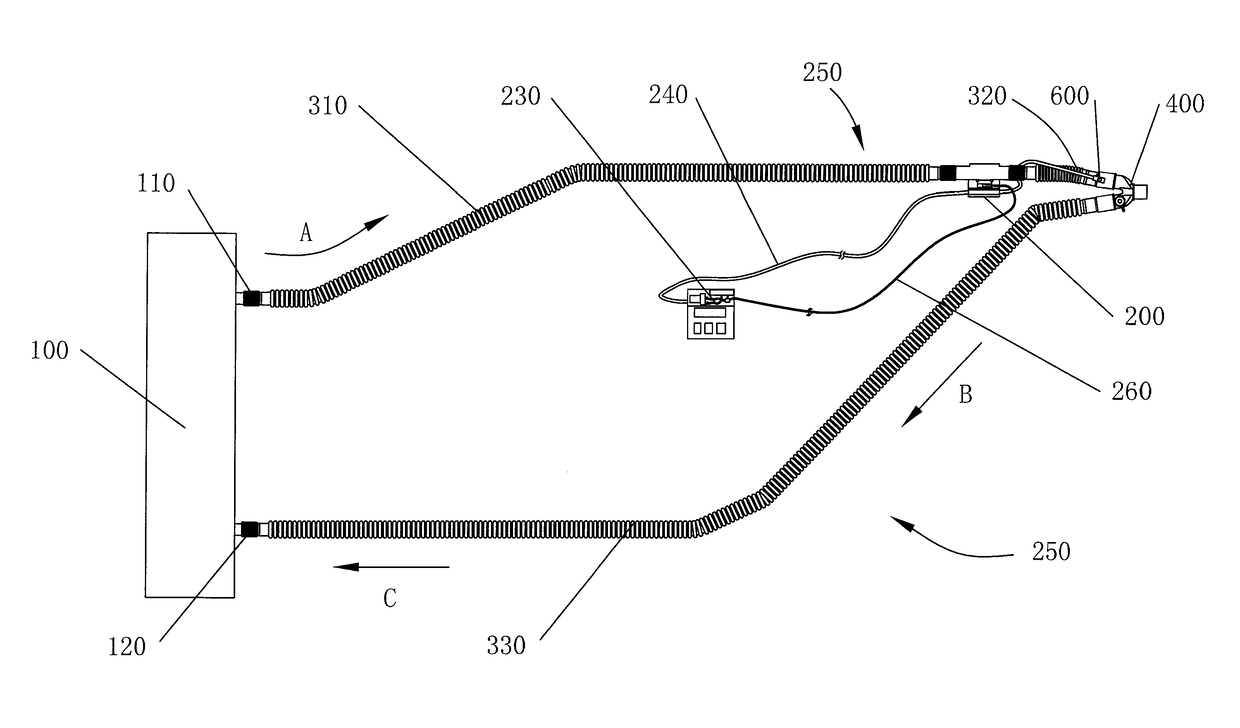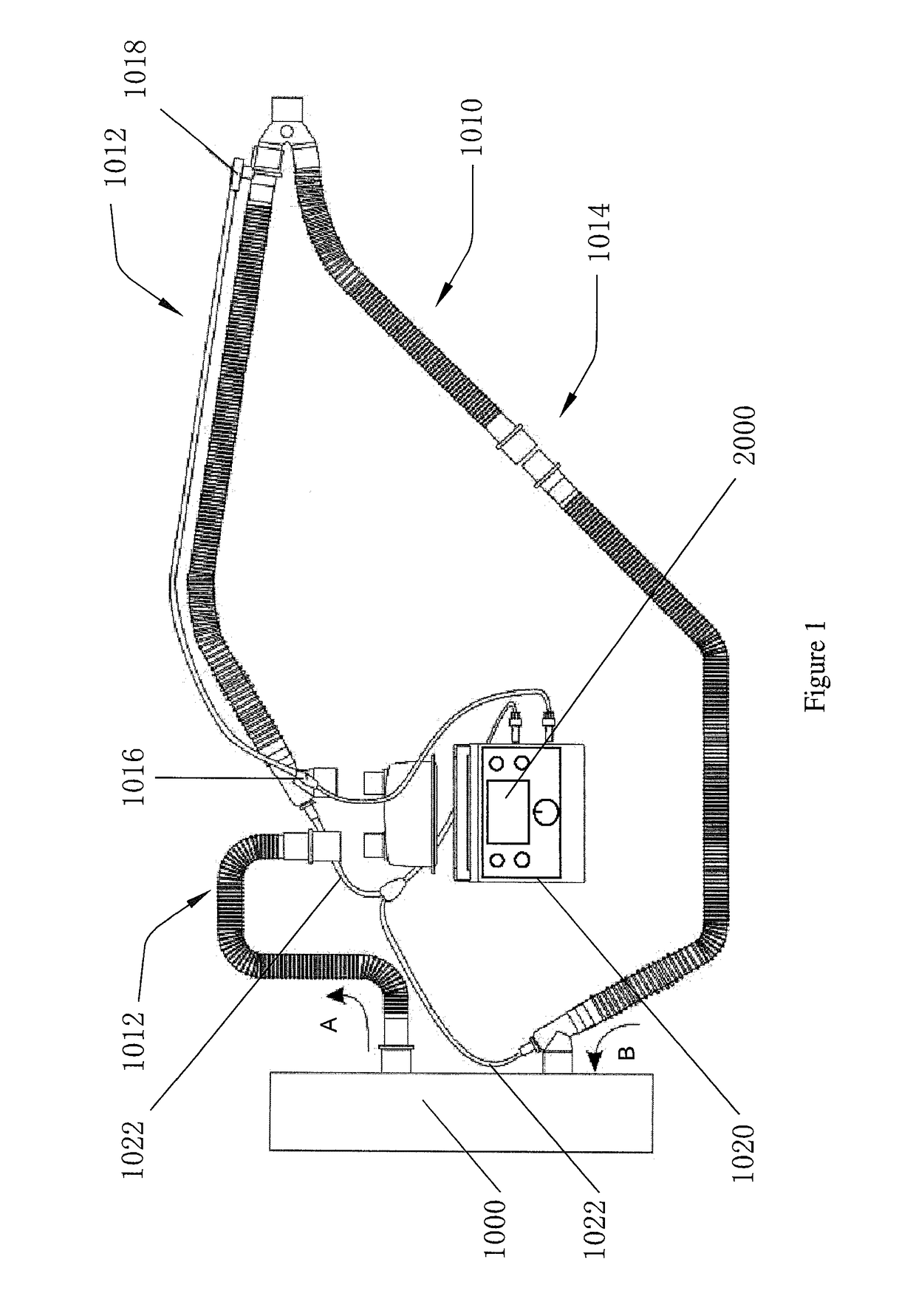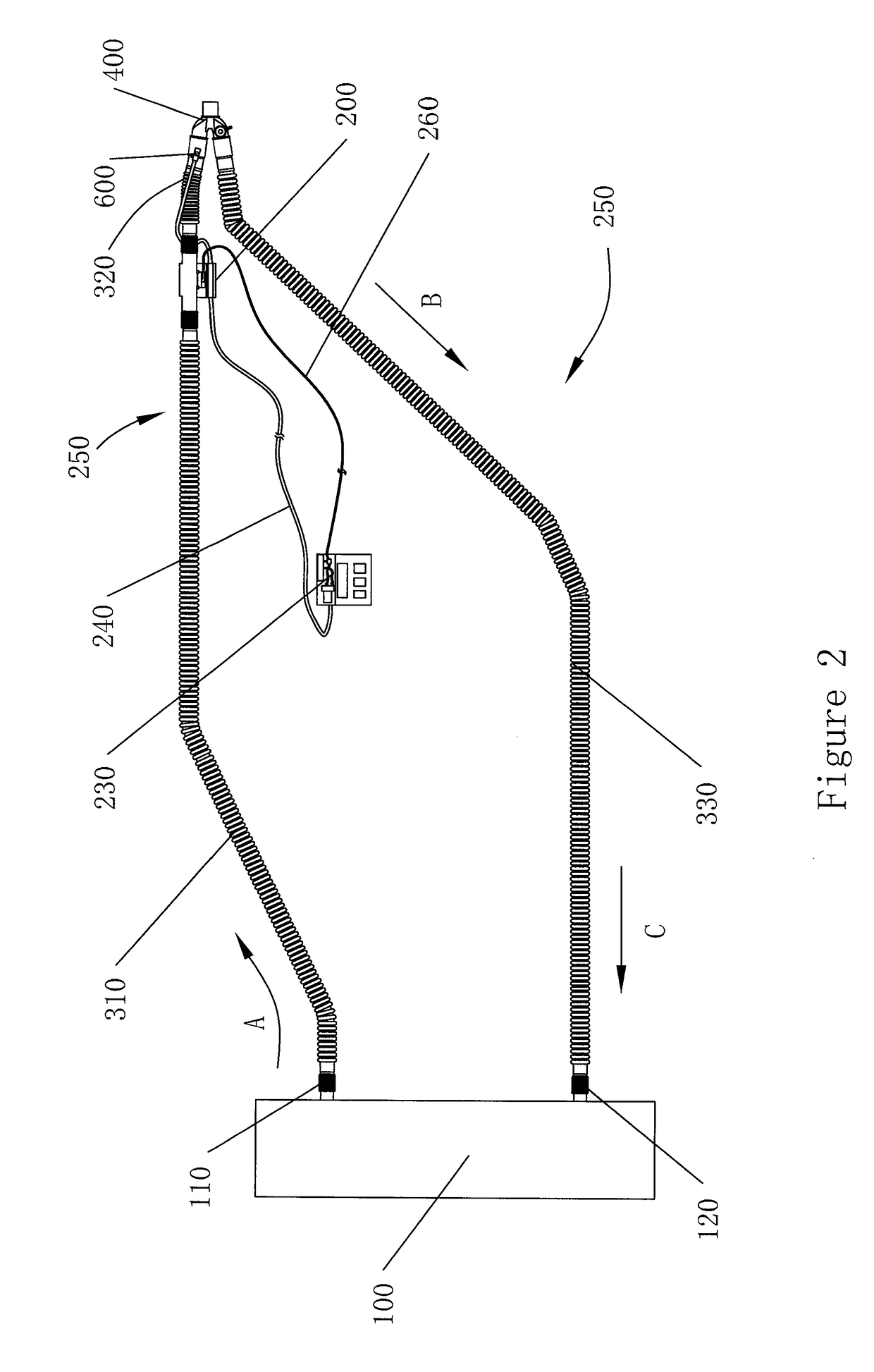A micro-humidifier
a technology of micro-humidifier and humidifier, which is applied in the direction of inhalators, medical devices, other medical devices, etc., can solve the problems of affecting the humidification effect of respiratory airway and lungs, condensation inside the breathing circuit is a risk factor for ventilator-associated pneumonia, and the relative humidity cannot reach 100% relative humidity, so as to reduce or even prevent condensation, reduce the cost of respiratory humidification, and reduce the occurrence of microbes and mold growth
- Summary
- Abstract
- Description
- Claims
- Application Information
AI Technical Summary
Benefits of technology
Problems solved by technology
Method used
Image
Examples
Embodiment Construction
[0020]Unless otherwise specifically provided, all tests herein are conducted at standard conditions which include a room and testing temperature of 25° C., sea level (1 atm.) pressure, and pH 7, and all measurements are made in metric units. Furthermore, all percentages, ratios, etc. herein are by weight, unless specifically indicated otherwise.
[0021]As used herein, the term “upstream” indicates the direction that the flow (e.g., air flow, liquid flow, etc.) is coming from. Conversely, as used herein, the term “downstream” indicates the direction that the flow is going. In the figures herein, the air flow is indicated with arrows A, B and sometimes C. In these figures, A is always upstream of B which in turn is upstream of C (when present). Conversely, C (when present) is always downstream of B which is in turn downstream of A. In FIG. 4, X is upstream of Y when indicating the direction of the liquid flow.
[0022]As used herein, the term “operably-connected” means that the indicated i...
PUM
 Login to View More
Login to View More Abstract
Description
Claims
Application Information
 Login to View More
Login to View More - R&D
- Intellectual Property
- Life Sciences
- Materials
- Tech Scout
- Unparalleled Data Quality
- Higher Quality Content
- 60% Fewer Hallucinations
Browse by: Latest US Patents, China's latest patents, Technical Efficacy Thesaurus, Application Domain, Technology Topic, Popular Technical Reports.
© 2025 PatSnap. All rights reserved.Legal|Privacy policy|Modern Slavery Act Transparency Statement|Sitemap|About US| Contact US: help@patsnap.com



